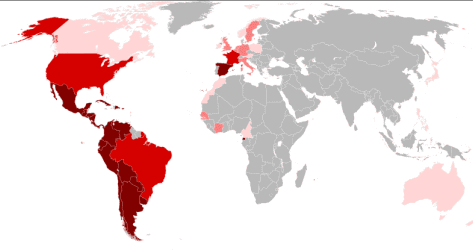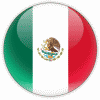Lessons
Spanish Lessons
Linguistic
Spanish Vocabulary
Culture
Spanish Phrases
Structure
Spanish Grammar
Official Name
Spanish | Español
Pronunced: es.paˈɲol
Writing System
Spanish alphabet
Contains 29 letters
Language Speakers
559,000 million
70% native speakers
Difficulty Level
Medium
Moderate effort required
Spanish Fun Facts Card
The following page contains a list of fun facts about both Castillian and Spanish of Latin America. This information might be useful whether you're a novice or advanced learner.
- Spanish is a Romance language that originated in the Castile region of Spain and today has hundreds of millions of native-speakers across the world with Mexico as number one, followed by the United States, Columbia and Spain.
- Spanish is the primary language of 20 countries worldwide. Therefore Spanish is one of the six official languages of the United Nations, and it is used as an official language by the European Union.
- There are more native Spanish speakers than English worldwide.
- There are differences in vocabulary, grammar and pronunciation between the Spanish of Spain and the Spanish of Latin America. However the differences are not so great as to make the communication difficult between the two speakers.
- Spanish vocabulary was influenced by its contact with Basque, Ibero-Romance languages, and Arabic during the Al-Andalus era in the Iberian Peninsula.
- Spanish is one of the world's most phonetic languages. If you know how a word is spelled, you can almost always know how it is pronounced.
- There are 559 million Spanish speakers as a first or second language, including speakers with limited competence and more than 21 million students of Spanish as a foreign language. It is the third language by total speakers behind Mandarin and English.
- Spanish is the official language in Spain, Equatorial Guinea, and 19 countries in the Americas. Speakers in the Western Hemisphere total some 418 million. In the European Union, Spanish is the mother tongue of 8% of the population, with an additional 7% speaking it as a second language.
- Spanish has at least 3 million native speakers in each of 44 countries, making it the fourth most widely spoken language behind English (112 countries), French (60) and Arabic (57).
- Spanish is the most popular second language learned in the United States?
- Although Spanish originated on the Iberian Peninsula as a descendant of Latin, today it has far more speakers in Latin America.
- After Latin, the language that has had the biggest influence on Spanish is Arabic.
- Spanish and English share much of their vocabulary through cognates (common original words), as both languages derive many of their words from Latin and Arabic.
- The biggest differences between English and Spanish in grammar is Spanish's use of gender, a more extensive verb conjugation and the widespread use of the subjunctive mood.
- The first documents to record what is today regarded as the precursor of modern Spanish are from the 9th century (Glosas Emilianenses: A collection of medieval glosses).
Spanish Map

Lessons
Spanish Lessons
Linguistic
Spanish Vocabulary
Culture
Spanish Phrases
Structure
Spanish Grammar



